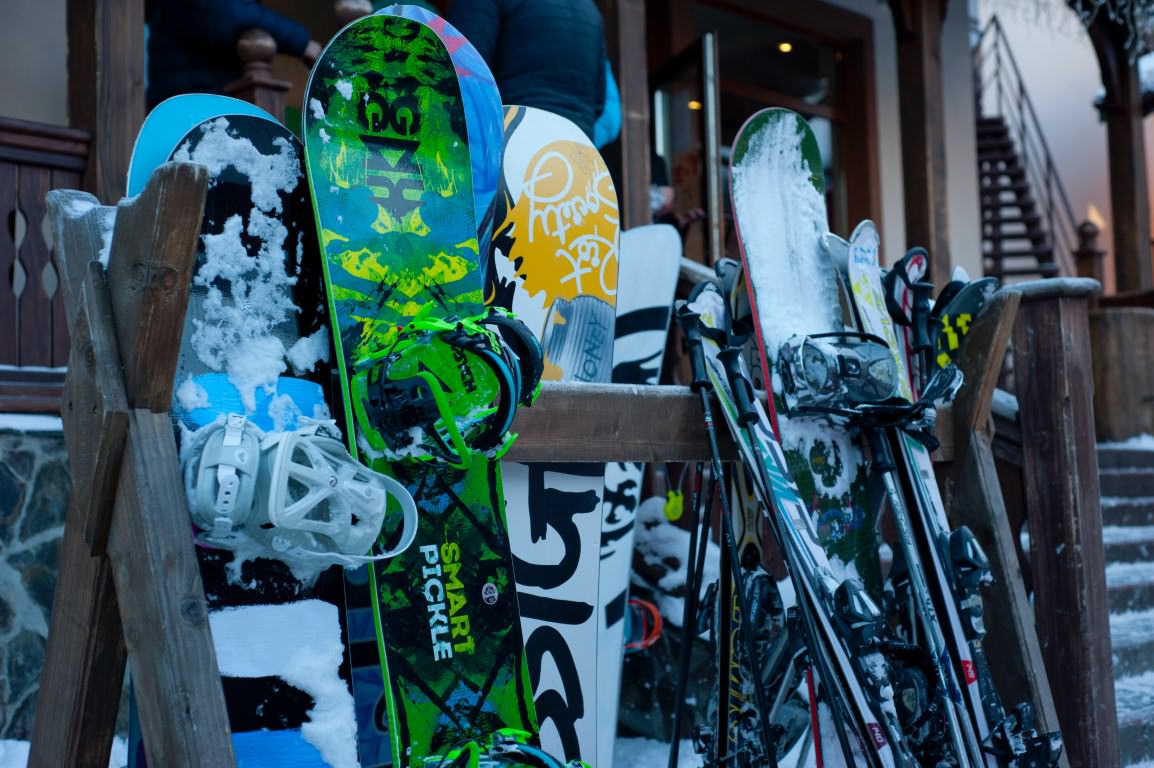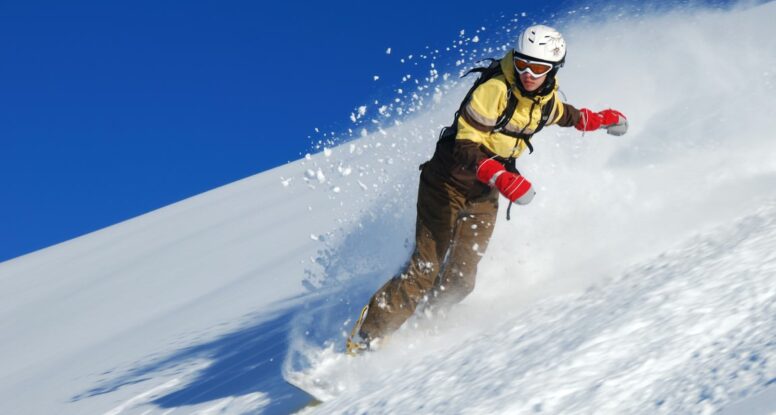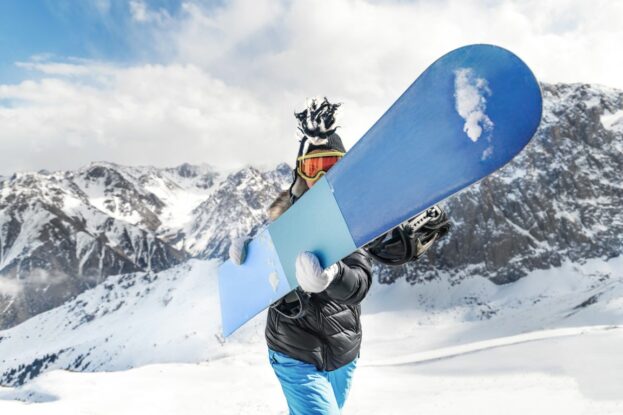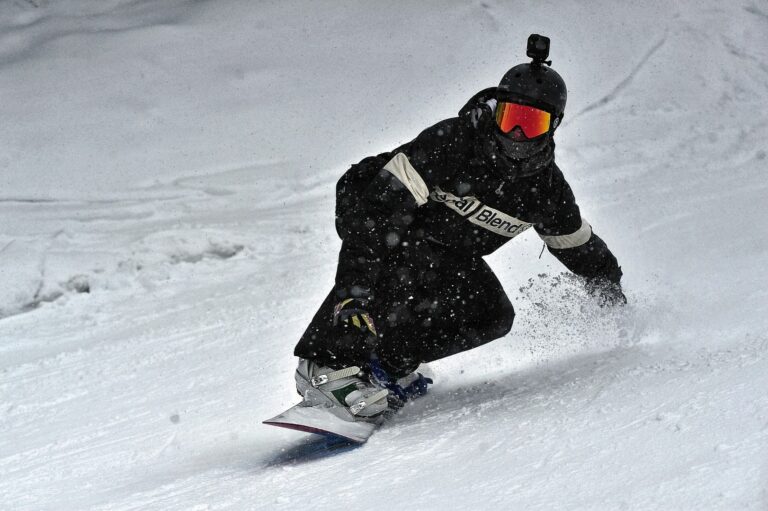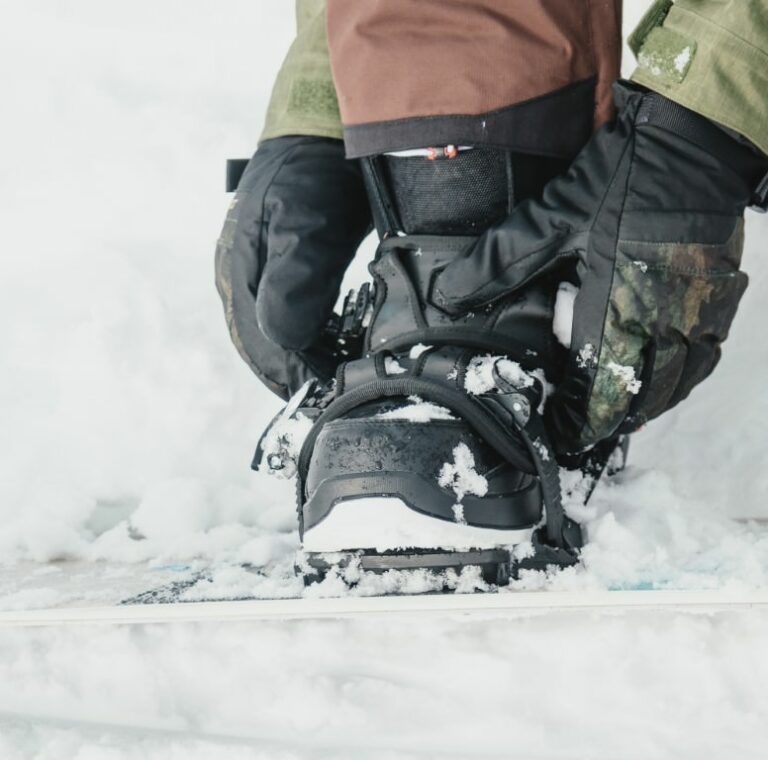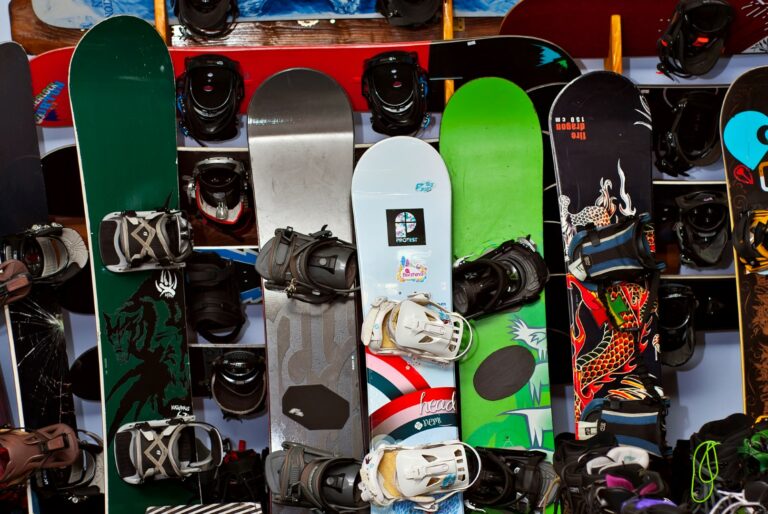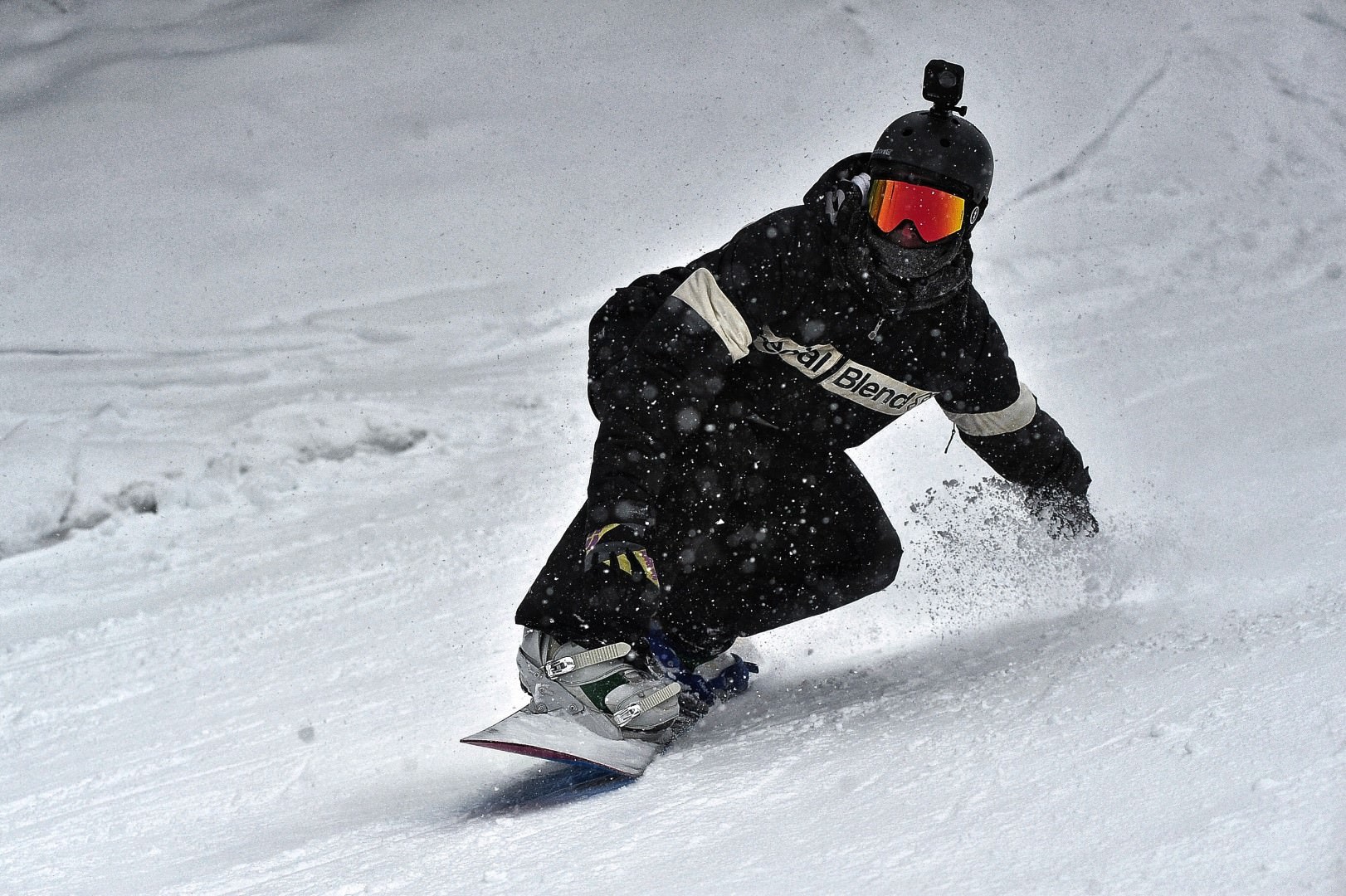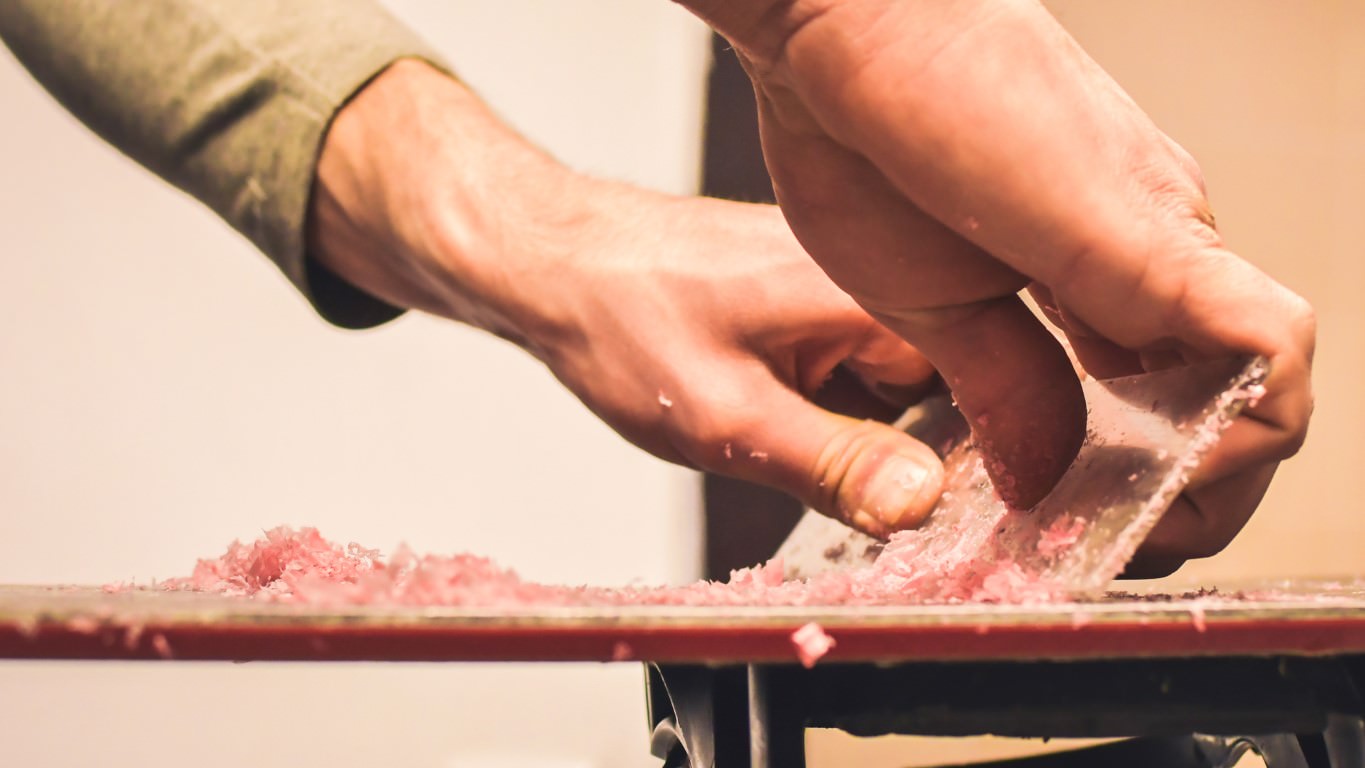The Essential Snowboard Must-Haves
There are some absolute must-haves when it comes to snowboarding, without which you simply cannot shred. Head to the mountains without them, and you’ll be going home early or spending big to rectify your error.
Snowboard
At the heart of snowboarding, there’s, well, the snowboard. They come in different shapes, sizes and looks to suit your weight, foot size, snowboarding style, ability and preference.
For complete beginners, freestyle boards are the easiest on which to learn. All-mountain boards provide the most versatility, so are a good first snowboard to buy. Many advanced riders have a quiver of boards to choose from designed for specific riding such as carving, powder or park.
Snowboard Boots
Boots should be your first snowboarding purchase. They are the most personal of all the kit you’ll own, and while you may swap boards, most people have one pair of boots for all riding.
When it comes to buying snowboard boots, it is all about fit and comfort. They should be a tighter fit than your typical footwear. If your boots are too loose, you have less board control and could get injured. If your boots are too small in width, length, depth or any other factor the subsequent foot pain can be intolerable.
Boots are made on a sliding scale of soft to stiff. Softer boots provide more comfort and forgiveness (not of the religious kind) making them great for beginners and freestyle riders. Stiffer boots offer more control and precision and are better for advanced snowboarders and those into carving and freeride.
Snowboard Bindings
The bindings connect your boots to your snowboard and getting the right ones is more important than getting the right board. More experienced snowboarders will often have multiple boards and swap their preferred bindings between them.
The binding transfers your body movements to the board. So you need a close fit with your boots, but if too tight, putting them on is an issue.
Snowboard bindings come in small, medium and large sizes with plenty of adjustability – tinkering with your bindings is part of being a snowboarder. Again flex varies from soft to stiff, and most people roughly align their binding flex with their boots.
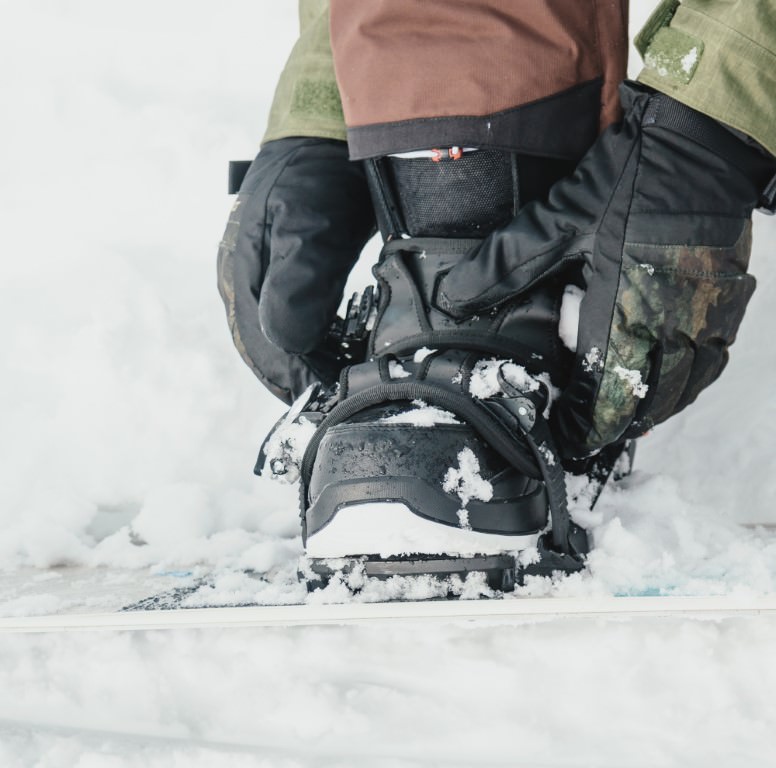
Highly Recommended Snowboard Essentials
In theory, you can snowboard without the below gear. But it is not recommended. I know because I have tried without and learned lessons the hard way. Trust me, you’ll have a better time if you ride with the below equipment.
Snowboard Helmet
It’s cool not to wear a lid, until you end up with brain damage. A snowboard helmet can not just save your life. It can keep you living the life you currently enjoy. So please wear one.
The helmet should fit snugly, with minimal movement. Try it on with your goggles to ensure they fit, and don’t leave the dreaded “gaper” gap over your forehead.
Consider features like ventilation, adjustability, MIPS and ensure they meet the F2040 (CEN 1077 Europe) standard. Remember, no helmet lasts forever. After taking a big hit or after a few years of regular use, it’s time for a replacement.
Snowboarding Goggles
You can snowboard in sunnies, although you’ll not see as clearly, and they’re not very comfortable with a helmet. Instead, purchase goggles to protect your eyes from UV rays, wind and snow. They’ll also reduce glare, stop teary eyes and provide better definition than sunglasses. Look for 100% UV protection and anti-fog features.
Different lens colors have various advantages, but all aim to enhance definition in different conditions. As a rule, darker lenses let less light through so they are great for sunny days, while lighter ones improve visibility on overcast or snowy days.
Snowboarding Jacket and Pants
I have snowboarded in jeans once and in a hoodie a few times in good conditions. It is okay until you fall over and get them wet, as they stay wet the rest of the day. And snowboarding with a soggy bottom or wet top is no fun.
Your jacket and pants should be waterproof, windproof, and breathable. Look for gear with a waterproof and breathability ratings of 10k or above to keep moisture out and allow sweat to escape. If you ride hard in any conditions, look for 20k or more.
Whether you go for insulated or shell outerwear is a personal choice. Shell is more versatile as it can be worn independently or combined with midlayers. Insulation will keep you warmer, but breathability often suffers, and you cannot reduce the amount of insulation. Look for snow skirts, gators, ventilation zips and lots of pockets.
Snowboarding Gloves or Mittens
Ever made a snowman wearing normal gloves? Your hands quickly get wet and cold. When snowboarding, your hands are often on the snow, and your gloves take more punishment than any other gear.
This is why you need gloves or mittens that are fully waterproof, insulated, and durable. Gloves offer better dexterity, while mittens tend to be warmer.
Thermal Base Layers
You can, in theory, wear anything under your ski gear. But if you’ve ever exercised in cotton, you’ll know that it holds moisture which cools you down very quickly when you stop moving. On the mountain, that can cause Hypothermia which kills people every year.
The clothing next to your skin is called a base layer, it plays a vital role in maintaining your body temperature. A good base layer will wick away sweat, keeping you dry and trapping heat to keep you warm. They’re generally made from merino wool or synthetic materials like polyester.
To save money, any sportswear will do the job of a base layer. But it probably won’t be as warm as thermals designed for winter sports.
Snowboard Socks
The same applies to your socks. It is tempting to wear a thick pair of cotton socks, but you’ll end up with wet and cold feet as your sweat won’t escape. Most sports socks are not long enough for snowboarding and are often ribbed above the ankle, which is uncomfortable beneath a snowboard boot.
So invest in some ski and snowboard socks to improve your comfort. They are usually knee-high and designed to provide warmth, wick away moisture, and to feel comfortable in boots.
Sunscreen
With less atmosphere to pass through, the sun’s rays are 8 to 10% stronger for every 1000 feet of altitude. Add light reflection from the snow, and it is very easy for exposed skin to be burnt.
Opt for a broad-spectrum sunscreen with an SPF of 30 or higher. Remember to reapply throughout the day. I have known people get sunburned in overcast conditions, so to avoid a big red nose and goggle tan, wear sunscreen!
Lift Pass
You’d have thought that a lift pass is an essential piece of kit. After all, this is your ticket to the slopes, granting you access to the ski lifts and trails. However, many ski resorts have free beginner lifts, so you may not need a lift pass your first few days.
Furthermore, if you are splitboarding, hiking or snowshoeing up, you won’t need a lift pass. Also, I know people that walk up every morning to then use the higher lifts that do not check your passes.
Additional Recommendations for Snowboarding Non-Essentials
This next section is made up of snowboarding items that are not essential. However, I strongly recommend having them.
Midlayer
Depending on the conditions, outer layer insulation and how much you feel the cold, you may want to wear midlayers for extra warmth. The classic midlayer is a fleece, but any non-cotton jumper, hoodie or flannel shirt will do. Technical mid layers – an insulator jacket not using down insulation – are also common.
Wrist Guards
Wrist sprains and fractures are the most common snowboarding injury, especially for beginners or those freestyling. Wrist guards protect your wrists from sprains, fractures and breaks by redistributing the force over a larger area. They can be worn under your gloves, or some gloves come with them incorporated.
Snowboard Lock
I have only had a snowboard stolen once in 20 years. And that was when I left it at 3pm to go for a quick beer and went to collect it after spilling out of a club (still in my snowboard gear) at 3am.
While a lock won’t hinder a dedicated thief, it stops opportunists from nabbing it. Furthermore, it stops people from accidentally taking it if it’s similar to theirs. Remember, many insurance policies do not cover a board that isn’t locked.
Hydration Pack or Water Bottle
Staying hydrated on the slopes is crucial. The dry air and altitude mean you need to drink more, plus regular sips of water can temper a hangover. I personally chuck a small plastic bottle of around 300ml in my pocket, which I refill at lunch and drink stops.
Some people prefer a hydration pack which is particularly good if you are hiking for lines. Also, a durable, insulated bottle can keep hot drinks at your desired temperature all day.
Neck Warmer or Balaclava
I rarely wear one, but when it is cold enough, a neck warmer you can pull up over your face, or a full-on balaclava is a blessing. They protect your face and neck from the cold and wind and are especially useful if caught on a chairlift in a blizzard. Look for breathable materials that wick away moisture.
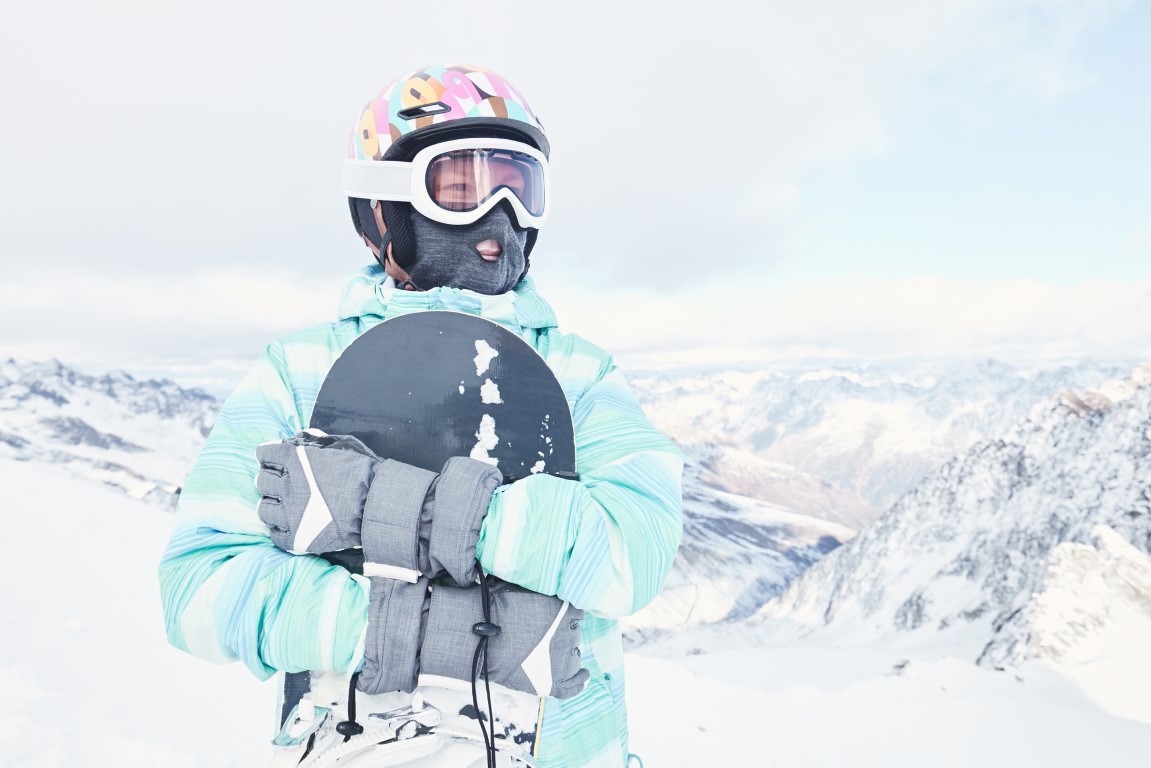
Multi-tool for Snowboard Maintenance
A snowboard multi-tool with a range of screwdriver heads is designed to make changing your bindings easier. They are normally pocket sized so handy for on-the-go adjustments.
I ride with a multitool when I have a new snowboard or bindings, and so I’m not sure of my set-up. I also take it when riding in the backcountry, just in case something needs adjusting or tightening.
Optional Snowboarding Extras
Knee Pads
Just like wrist guards, knee pads provide extra protection from falls. They are useful in terrain parks where you are likelier to crash or hit features like rails. If you are learning to snowboard in icy conditions, you’ll love your knee pads.
Crash Pants
These are shorts that provide padding around your bottom and thighs. Pretty much essential if you have a prominent coccyx or a boney bottom. And great for beginners. As a bonus they keep your bottom warm when sitting in the snow.
Snowboarding Backpack
When resort riding, I fill my pockets, but many people prefer carrying the essentials in a backpack. While any rucksack will do the job, something with a padded back helps to avoid uncomfortable landings on the contents.
Specific ski/snowboard backpacks are particularly good. They normally have a lower profile, specialized compartments for avalanche gear and straps for carrying your snowboard. Some come with hydration reservoirs or insulated pockets for snacks.
Lip Balm
Similar to sunscreen, a lip balm with SPF can protect your lips from getting chapped or sunburned in the cold, windy and often sunny mountain conditions. Be careful not to use anything oil based like Vaseline that will intensify the sun’s rays.
Avalanche Beacon, Snow Shovel, and Probe (for backcountry snowboarding)
Venturing into the backcountry? Avalanche safety equipment is essential. An avalanche beacon sends out a signal that rescuers can use to find you in an avalanche. It also helps you to rescue someone.
A lightweight, durable snow shovel is vital for digging snow pits and avalanche rescues. Plus a probe is used for pinpointing the exact location of an avalanche victim.
Snacks/High Energy Food
Everyone is different, but keeping your energy levels up is key to endurance on the slopes. So if you are prone to needing a snack, or struggle to eat much for breakfast, then pack some high-carb and protein snacks. Nuts are good, as are energy bars, and a plain old chocolate bar will get you out of an energy hole.
First Aid Kit
I have never taken a first aid kit with me in twenty years of riding, but I nearly always have Ibuprofen in my pocket. For resort riding, help is never far away, so a first aid kit is not essential, but I do carry meds to alleviate existing ailments.
However, for backcountry riding, a first aid kit is recommended. Personally, I never backcountry snowboard without a guide who carries a first aid kit including bandages, antiseptic wipes, gauze pads, tape and pain relief etc.
Action Camera
An action camera designed to withstand extreme sports and all weather conditions, such as a GoPro, is great for capturing your snowboarding. Just remember it won’t look as fast, big or extreme as it was at the time. Also, consider the increased faff involved and how that can impact the group you are snowboarding with.
Board Bag or Case
Last but not least, a snowboard bag or case will protect your gear from damage during transportation and make it easier to store everything when packing for a snowboarding trip. Look for one large enough to fit all of your snowboarding kit. A snowboard bag with wheels makes life much easier.
Conclusion
When it comes to snowboarding, the right gear can make the difference between an unforgettable day and an uncomfortable experience. From the board under your feet to the helmet on your head, being well-equipped improves your time on the mountain.
That being said, you can still have an epic day without all the top-spec kit, so don’t let that put you off going snowboarding. Ultimately the only bad day in the mountains is one you don’t snowboard, so gear up with whatever you have and get riding.
